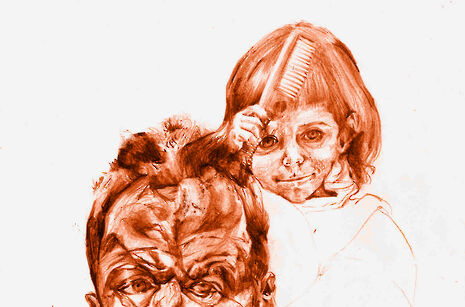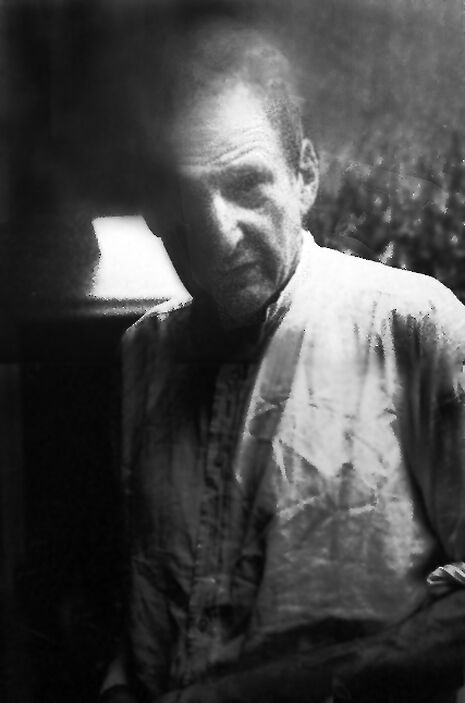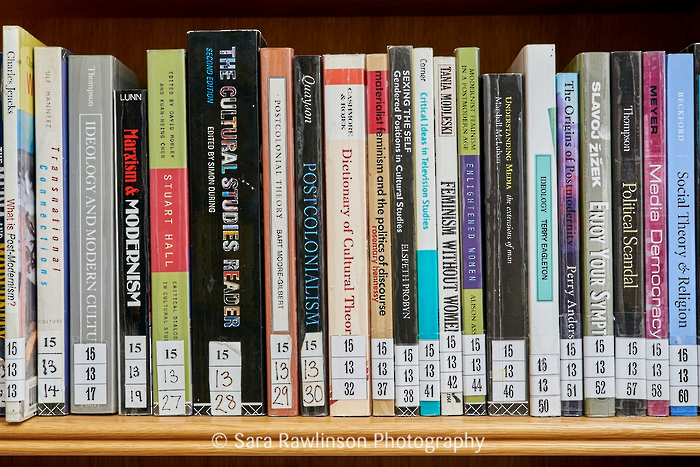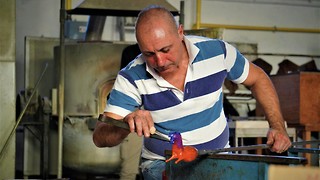Lucian Freud – Painting from the Outside
In the wake of a new biography, Harry Balden reflects on Freud’s lifelong eccentricity and the strength this lent his art

Despite a legendarily large circle of friends and lovers, consciously drawn from juxtaposing social classes, including criminals and aristocrats, there are few people Lucian Freud was truly intimate with. His children describe being allowed to cut his hair when he was well into his eighties as the first time they’d ever really been able to touch him. The café in Holland Park, where he used to meet his huge variety of associates, was a scheduled and filtered world. Friends commented that he didn’t want his acquaintances from different walks of life intermingling and cross-propagating, as if that was to knock down the walls separating the different parts of his life.
His love of his own privacy extended to swatting away interview requests and often refusing to fill out any form where he had to give personal information. Though large, his circle of friends was subject to change and break-offs, with close friends such as Francis Bacon (who saw Freud daily at one point) abruptly discarded. Certainly controlling and manipulative of the many women who found him attractive, even in his friendships he preferred to dictate the tempo and tenor of the relationship himself.
“His own nature heightened his need to see, to understand, others”
Like Bacon, a lot of his early inspiration for his artwork came from horses. Bacon grew up asthmatic on a farm, thus explaining why subjects of Bacon paintings often look like they’re choking, as one can imagine the vision of horses kicking up equestrian sand into lungs ill-equipped to handle it. Freud, as a young Jewish child was quickly evacuated from Germany soon after the Nazis came to power, and plonked into an English progressive school unable to speak the language, spending most of his time in the school stables.
Oblivious to the protests of frustrated teachers, he was eventually moved to a school with no stables, and proceeded to spend his time in the art studio making a sculpture of a horse’s rear end that alone won him entry to art school. Whereas Bacon folded a traumatic childhood experience into the (as always) confessional nature of his work, Freud’s viewpoint was purely observational. “The model”, he wrote in his 1954 two page manifesto that along with a single television interview in the 1980s form two rare portals into his view of his own work, should only provide for the painter “the starting point for his excitement”.

David Hockney commented of him that he could be put in the most uninteresting motel room and not be allowed out for a week and he’d find something interesting to look at in the way the carpet met the wall. ‘Trust in paint’ is the phrase he kept returning to in his 1988 interview, as if through nothing but the constant application of practice, he could sate his own visual curiosity and understand the things around him.
A hatred of professional sitters for portraits in favour of acquaintances reflected a dislike of the idea that a painting could be staged, or faked. Rather what should be strived for is an ‘intensification’ of reality. His own nature heightened his need to see, to understand, others. Not just how they look, but the ‘aura’ they give off, commenting at one point that the difference between two people’s presence in a room is the difference between “a candle and a lightbulb”.
What this translated to on the canvass, mostly brutal depictions of subjects without any of the visage people present in their daily lives, are mitigated in their plain meanness by the fact that the person he is consistently most merciless towards is himself. Repeatedly throughout his career, through the fine brushwork of his early work to the sculptural quality of later brushwork afforded by the switch to Cremnitz white paint, his self portraits stand out among his best work and the RA show Lucian Freud: The Self Portraits opening this month promises to be unmissable.
“A hatred of professional sitters for portraits in favour of acquaintances reflected a dislike of the idea that a painting could be staged, or faked”
His own exceptionalism and eccentricity allowed for the de facto enabling of his own behaviour that led to him infamously having fourteen children with multiple women. However, occasionally something he did would have consequences; the disgusting portrayal of his first wife in Hotel Bedroom (1954) was one of the factors that contributed to their divorce.
The indifference shown towards teachers’ proddings in school re-emerged in a consistently baffled attitude towards critics. Lauded in his early career, selling works to the Tate as early as 23, his turn toward realism had no mileage in the pop art and abstract expressionist 1960s and he only achieved fame once again in the late 1980s, taking the unofficial title of Britain’s greatest living painter after Bacon’s death in 1992. Yet his work’s style (though it increased in quality in his later years) remained largely unaffected by the ebbs and flows of his reception. A single trip to New York (having rarely travelled further than Paris and, once, to Greece) with the opening of his MoMA retrospective was his one concession to his later fame.
Freud’s loyalty in, and commitment to, his style and approach eventually found such wide appeal for the same reasons it had once been so unfashionable. Other factors helped, of course. His work, though brutal, rarely strays from the tasteful. But few modern artists whose work commands the prices Freud’s does limit themselves so narrowly in colour palette and subject matter. The scope of work he had by the time he was famous, and the length of time it took to produce, stands as a monument to following your own inclinations, regardless of what anyone else thinks. In the end, he was irrepressible.
 Comment / The (Dys)functions of student politics at Cambridge19 January 2026
Comment / The (Dys)functions of student politics at Cambridge19 January 2026 News / Local business in trademark battle with Uni over use of ‘Cambridge’17 January 2026
News / Local business in trademark battle with Uni over use of ‘Cambridge’17 January 2026 Arts / Exploring Cambridge’s modernist architecture20 January 2026
Arts / Exploring Cambridge’s modernist architecture20 January 2026 Features / Exploring Cambridge’s past, present, and future18 January 2026
Features / Exploring Cambridge’s past, present, and future18 January 2026 News / Your Party protesters rally against US action in Venezuela19 January 2026
News / Your Party protesters rally against US action in Venezuela19 January 2026








